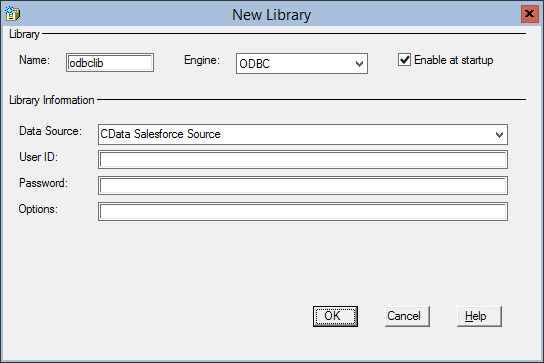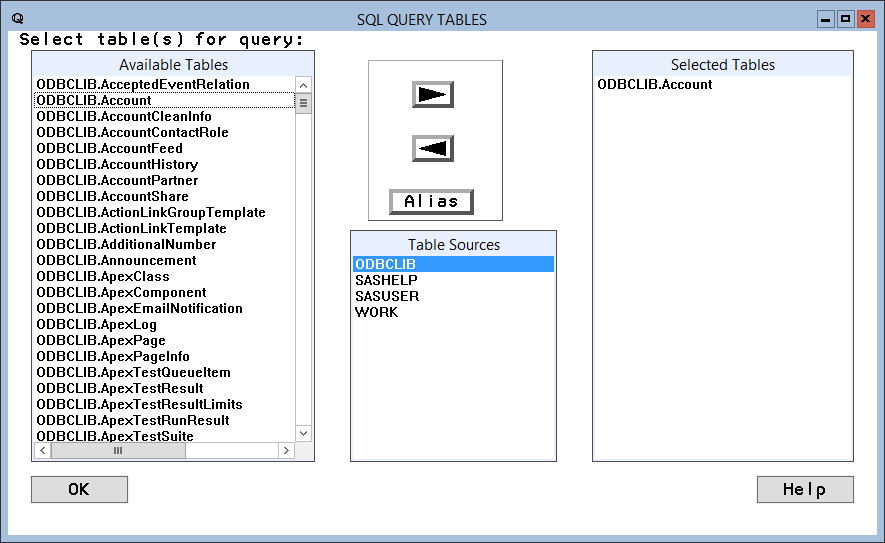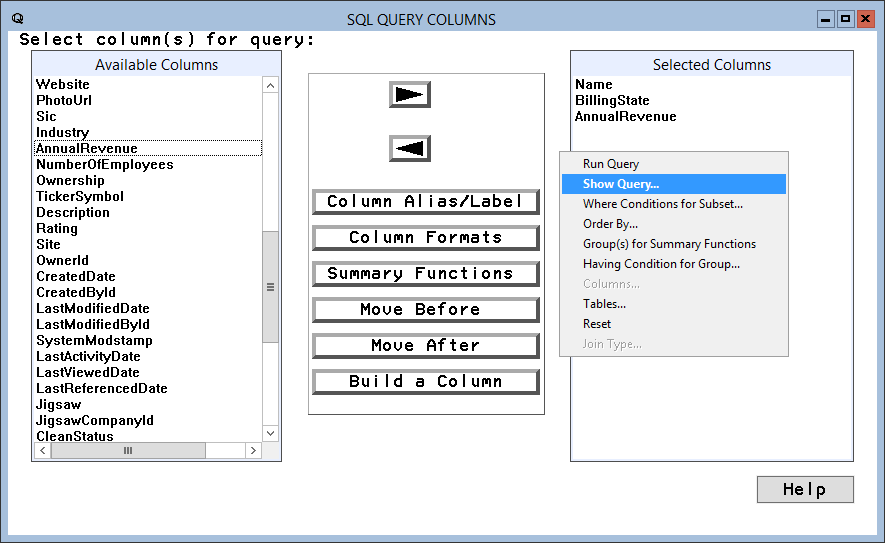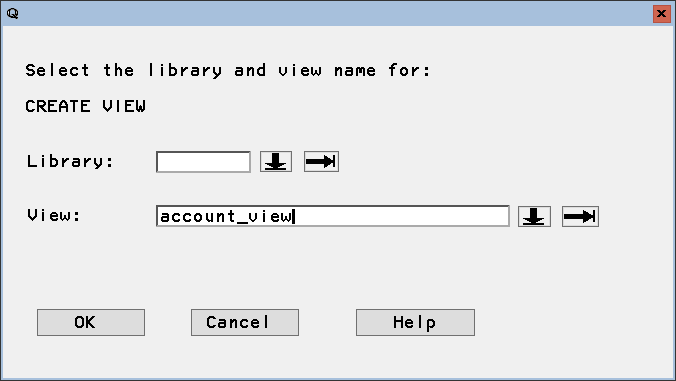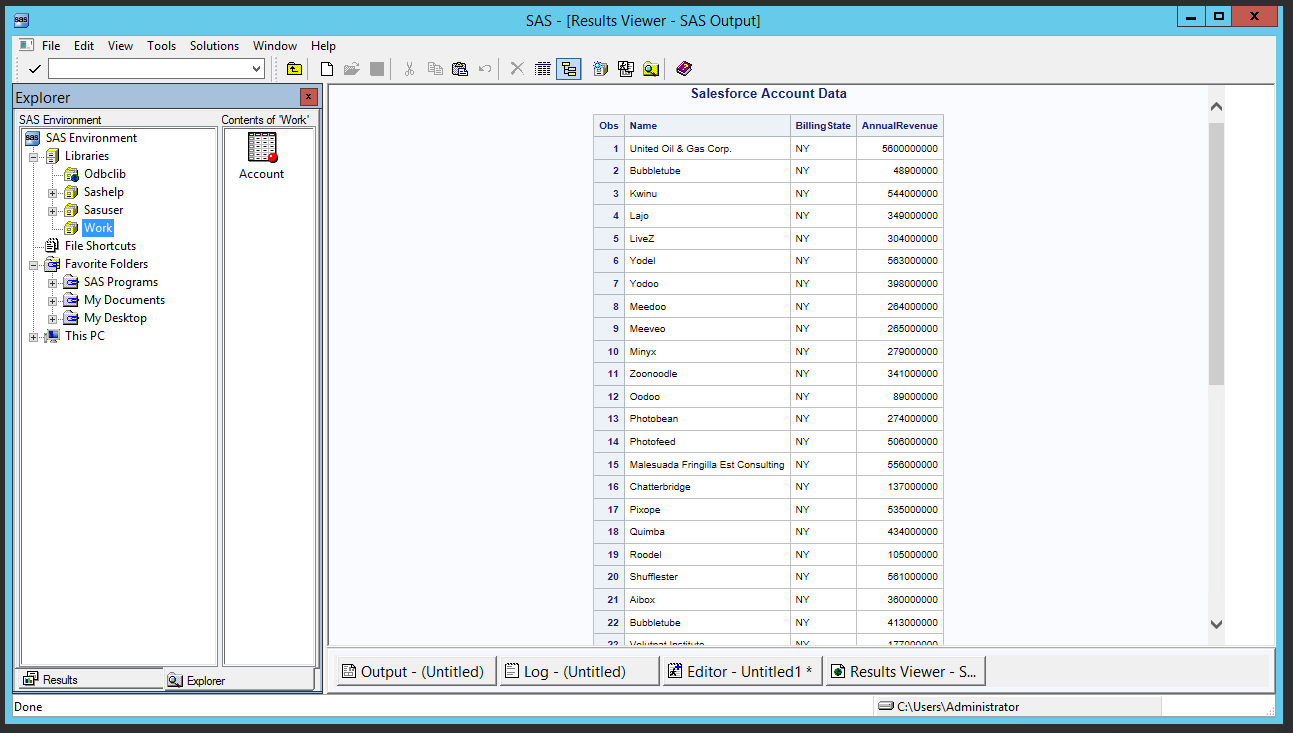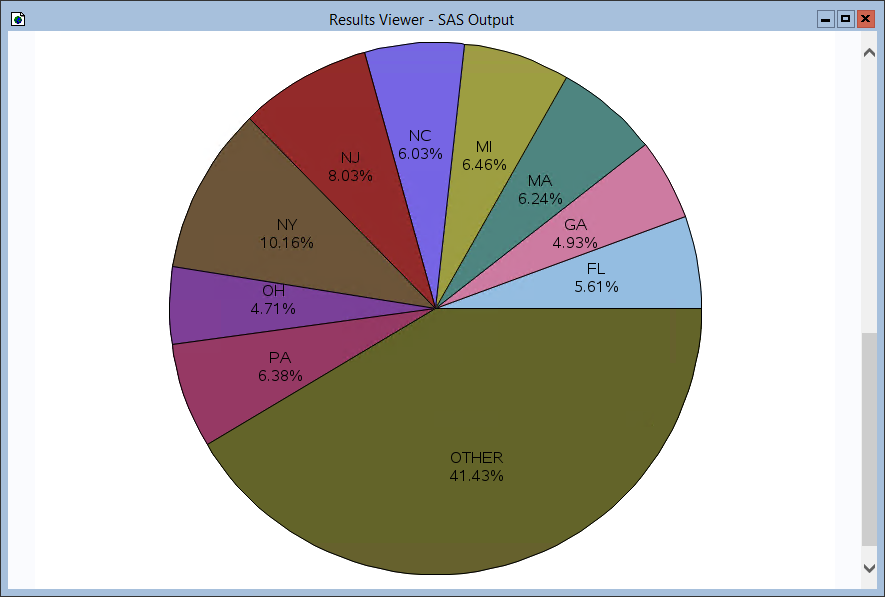Discover how a bimodal integration strategy can address the major data management challenges facing your organization today.
Get the Report →Use the CData ODBC Driver for XML in SAS for Real-Time Reporting and Analytics
Connect to real-time XML data in SAS for reporting, analytics, and visualizations using the CData ODBC Driver for XML.
SAS is a software suite developed for advanced analytics, multivariate analysis, business intelligence, data management, and predictive analytics. When you pair SAS with the CData ODBC Driver for XML, you gain database-like access to live XML data from SAS, expanding your reporting and analytics capabilities. This articles walks through creating a library for XML in SAS and creating a simple report based on real-time XML data.
The CData ODBC Driver offers unmatched performance for interacting with live XML data in SAS due to optimized data processing built into the driver. When you issue complex SQL queries from SAS to XML, the driver pushes supported SQL operations, like filters and aggregations, directly to XML and utilizes the embedded SQL engine to process unsupported operations (often SQL functions and JOIN operations) client-side. With built-in dynamic metadata querying, you can easily visualize and analyze XML data in SAS.
Connect to XML as an ODBC Data Source
Information for connecting to XML follows, along with different instructions for configuring a DSN in Windows and Linux environments (the ODBC Driver for XML must be installed on the machine hosting the SAS System).
See the Getting Started chapter in the data provider documentation to authenticate to your data source: The data provider models XML APIs as bidirectional database tables and XML files as read-only views (local files, files stored on popular cloud services, and FTP servers). The major authentication schemes are supported, including HTTP Basic, Digest, NTLM, OAuth, and FTP. See the Getting Started chapter in the data provider documentation for authentication guides.
After setting the URI and providing any authentication values, set DataModel to more closely match the data representation to the structure of your data.
The DataModel property is the controlling property over how your data is represented into tables and toggles the following basic configurations.
- Document (default): Model a top-level, document view of your XML data. The data provider returns nested elements as aggregates of data.
- FlattenedDocuments: Implicitly join nested documents and their parents into a single table.
- Relational: Return individual, related tables from hierarchical data. The tables contain a primary key and a foreign key that links to the parent document.
See the Modeling XML Data chapter for more information on configuring the relational representation. You will also find the sample data used in the following examples. The data includes entries for people, the cars they own, and various maintenance services performed on those cars.
When you configure the DSN, you may also want to set the Max Rows connection property. This will limit the number of rows returned, which is especially helpful for improving performance when designing reports and visualizations.
Windows
If you have not already, first specify connection properties in an ODBC DSN (data source name). This is the last step of the driver installation. You can use the Microsoft ODBC Data Source Administrator to create and configure ODBC DSNs.
Linux
If you are installing the CData ODBC Driver for XML in a Linux environment, the driver installation predefines a system DSN. You can modify the DSN by editing the system data sources file (/etc/odbc.ini) and defining the required connection properties.
/etc/odbc.ini
[CData XML Sys]
Driver = CData ODBC Driver for XML
Description = My Description
URI = C:/people.xml
DataModel = Relational
For specific information on using these configuration files, please refer to the help documentation (installed and found online).
Create a XML Library in SAS
Connect to XML in SAS by adding a library based on the CData ODBC Driver for XML.
- Open SAS and expand Libraries in the Explorer pane.
- In the Active Libraries window, right-click and select New.
- Name your library (odbclib), select ODBC as the Engine, and click to Enable at startup (if you want the library to persist between sessions).
- Set Data Source to the DSN you previously configured and click OK.
![Creating a library for XML in SAS.]()
Create a View from a XML Query
SAS natively supports querying data either using a low-code, point-and-click Query tool or programmatically with PROC SQL and a custom SQL query. When you create a View in SAS, the defining query is executed each time the view is queried. This means that you always query live XML data for reports, charts, and analytics.
Using the Query Tool
- In SAS, click Tools -> Query
- Select the table sources and the table(s) you wish to pull data from. Then, click OK.
![Selecting table(s) to visualize.]()
- Select columns and right-click to add filtering, ordering, grouping, etc.
![Selecting columns(s) to visualize and configuring the query.]()
- Create a local view to contain the query results by right-clicking the SQL Query Tool window, selecting Show Query, and clicking Create View. Name the View and click OK.
![Create a local view to work with XML data.]()
Using PROC SQL
- In SAS, navigate to the Editor window.
- Use PROC SQL to query the data and create a local view.
NOTE: This procedure creates a view in the Work library. You can optionally specify a library in the create view statement.proc sql; create view people_view as select [ personal.name.first ], [ personal.name.last ] from odbclib.people where [ personal.name.last ] = 'Roberts'; quit; - Click Run -> Submit to execute the query and create a local view.
Report On or Visualize XML Data in SAS
With a local view created, you can report, visualize, or otherwise analyze XML data using the powerful SAS features. Print a simple report using PROC PRINT and create a basic graph based on the data using PROC GCHART.
Print an HTML Report
- In SAS, navigate to the Editor window.
- Use PROC PRINT to print an HTML report for the XML people data.
proc print data=people; title "XML people Data"; run;
![A simple XML data report.]()
Print a Chart
- In SAS, navigate to the Editor window.
- Use PROC GCHART to create a chart for the people data.
proc gchart data=people; pie [ personal.name.first ] / sumvar=[ personal.name.last ] value=arrow percent=arrow noheading percent=inside plabel=(height=12pt) slice=inside value=none name='peopleChart'; run;![A simple XML data chart.]()






